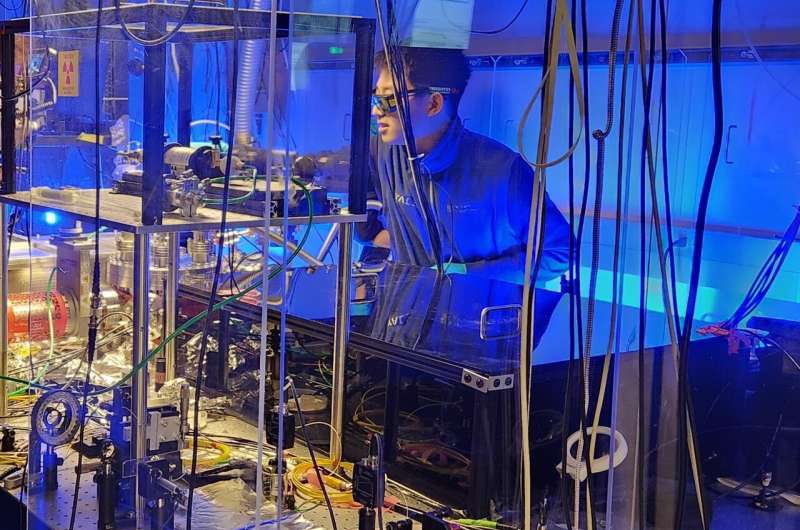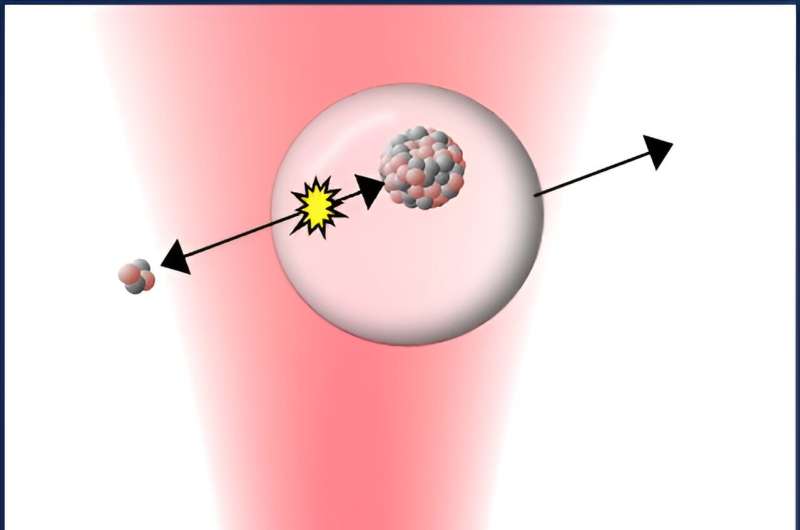July 26, 2024 feature
This article has been reviewed according to Science X's editorial process and policies. Editors have highlighted the following attributes while ensuring the content's credibility:
fact-checked
peer-reviewed publication
trusted source
proofread
Physicists introduce method for mechanical detection of individual nuclear decays

In recent years, physicists and engineers have developed increasingly sophisticated instruments to study particles and the interactions between them with high precision. These instruments, which include particle detectors, sensors and accelerometers, could help researchers to study physical processes in greater detail, potentially contributing to interesting new discoveries.
Researchers at Yale University recently introduced a new method to mechanically detect an individual nuclear decay, the process through which an unstable atomic nucleus loses energy via the emission of radiation. Their proposed approach, outlined in a paper in Physical Review Letters, is sensitive to all particles emitted in the decay, including neutral ones, which are difficult or impossible to detect using existing methods.
"Our group is developing sensitive micron-scale force sensors and accelerometers using optically trapped particles in vacuum," David C. Moore, co-author of the paper, told Phys.org. "Recently, the sensitivity of these systems has become so good that we realized we could detect the forces imparted by a single fundamental particle, such as an alpha particle emitted in a nuclear decay."
The key objective of the recent research by Moore and his colleagues was to develop new techniques to detect nuclear decays leveraging the forces imparted by individual fundamental particles. Such techniques would ultimately allow them to detect particles that have no electric charge (i.e., neutral particles), which can be especially challenging to detect using conventional detectors.

"Our approach is to monitor the motion of a single dust-sized particle in which radioactive nuclei are implanted," Moore explained. "If even a single nucleus in the dust particle decays, we can detect it by observing a change in the electric charge of the particle as charged particles such as alpha or beta particles escape."
In their initial experiments, the team showed that their method enables the detection of individual nuclear ? decays. Notably, the researchers could also observe the entire particle recoil at a precise scale of tens of nanometers, by carefully measuring the position of a sphere in their set-up from the laser light that is scattered from it.
"Our approach allows us to detect individual decays occurring within the particles even if they occur very rarely, for example, only once a day," Moore said. "This might allow us to study dust-sized particles relevant for nuclear monitoring and non-proliferation and detect individual decays of long-lived isotopes."
This work could soon open interesting possibilities for particle physics research. The promising detection method it introduced could, for instance, be used to search for dark matter and exotic particles or could advance the study of nuclear processes and neutral particles that evade traditional detectors.
"In our future work, we are aiming to extend the same techniques to smaller nanoparticles," Moore added. "This will allow us to detect the momentum kick from a single neutrino escaping the sphere. Neutrinos are so weakly interacting that they would otherwise essentially also escape without detection, but this new technique could give new tools to study these elusive particles."
More information: Jiaxiang Wang et al, Mechanical Detection of Nuclear Decays, Physical Review Letters (2024). DOI: 10.1103/PhysRevLett.133.023602. On arXiv: DOI: 10.48550/arxiv.2402.13257
Journal information: Physical Review Letters , arXiv
© 2024 Science X Network




















